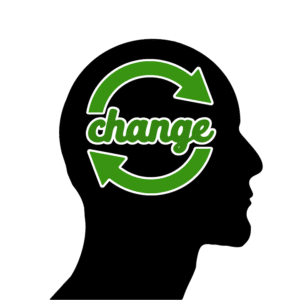What are the Five Emotional Stages in Change Management?

Understanding the Five Emotional stages of Change will explain why people are responding the way they are to your proposed changes and help you roll-out improvements more smoothly, allowing you to obtain buy-in from stakeholders that will deliver the performance improvement your changes were designed to realize. What are these are the five emotional stages in change management?
The Five Emotional Stages of Change Management
When you start to facilitate change within your organization you will take your stakeholders through phases of change or states of mind. With change implementation comes stages of change within your stakeholders (employees, customers, suppliers, etc.) that can create barriers to realizing your original change objectives.
The theory is based on the Kubler-Ross model, known as the 5 stages of grief, from the book Death and Dying. Here we are applying the stages to business change management.
Each phase is a normal emotional state that most people go through. Developing a communication plan to help guide your stakeholders through each phase, with prepared responses for each one, can ensure a successful roll-out for your changes and improvements.
These five stages in change management:
1. Denial or Anticipation
Stakeholders are anxiously waiting for what is about to come. People may not know what to expect; rumors abound, and speculation increases. Some may even be in denial of what is about to occur.
Introduce your vision and strategy, present your concrete steps, and build awareness to overcome the speculation and reduce the resistance or denial factor. Identify each stakeholder group and assess what information each group may need to prevent this from becoming one of the negative phases of change.
 2. Anger or Confrontation
2. Anger or Confrontation
Your stakeholders begin to see that change is really happening, improvement teams are forming, or new software features are being implemented. But that does not mean they are happy about it. In fact, they may be angry, frustrated, or downright resistant in an effort to fight your changes.
Help stakeholders get through it. Be firm and have responses to possible objections from each of your stakeholder groups. Remind stakeholders of your strategy (the one you used to address their anticipation in phase 1). You will need customized information tailored to each stakeholder group. There is no “one-size-fits-all” approach here. Each group has different interests, needs, and objections.
3. Bargaining or Realization
Once the change has been implemented, stakeholders will realize that nothing is ever going to be as it was before. Some may reminisce, longing for the “old ways” of doing it. Some groups may start negotiating alternatives to the changes seeking for a way out. They may try and not use the changes or go back to the “old ways”. Many will have questions about the changes and will want some answers.
This is one of the most important stages of change and you must be prepared with various communication vehicles such as memos, newsletters, town-hall meetings, interviews, team meetings, coaching and training sessions. Training is very important because changes introduce new concepts. If you don’t offer enough information to overcome their resistance, you may prolong the next phase.
4. Depression
Stakeholders may mourn the past. Intellectually, change is here, but emotionally, stakeholders don’t like it. People see what they believe, which means that even if the changes are working, they may not “see” positive results.
Address each stakeholder’s beliefs and give them time to work it through. Develop monthly communications to reinforce the behavior change. Keep an open door to answer lingering doubts. Show everyone how well their efforts are working. Communicate results and recognize successes.
5. Acceptance
This is the last part of the stages of change — stakeholders are now accepting the changes. Although they may have reservations, they are not fighting the changes anymore. They should be seeing some of the benefits on their own, even if they are not completely convinced.
Some will love the changes and may wonder how they ever managed the “old” way. Overall, they are starting to feel good about the changes and accept them as the new way of doing business.
Change Complete?
You are not done…
You will need to reinforce your changes and improvements with some type of follow-up and review. Use process audits, process reviews, and management reviews or solicit inputs from your stakeholders to obtain feedback and “lessons learned” that can be used to start a new cycle of improvement.
That’s right, at this point we are back to phase one, using feedback to anticipate stakeholders needs and make the next round of changes. An understanding of these emotional dynamics of change is critical for developing your communication plan.
The Emotional Stages of Change Management
Your communication plan objectives should address each of the Five Emotional Stages of Change Management. Understanding why people are responding the way they are to your proposed change will help you to roll-out your improvements more successfully and obtain stakeholder-buy-in that will actually deliver the performance improvement your changes were designed to realize.















It appears as though you have a solid understanding of the topic at hand, but you have neglected to take into account your audience. Maybe you should consider things from more than one perspective before making a decision.
I gained so much after seeing your post! In the past I often played games, this is a fun game for entertainment, but now I will follow you, reading your article will give me more knowledge.
That does not imply that they are content with it. In fact, they can be hostile toward your adjustments, irritable, or outright resistive.